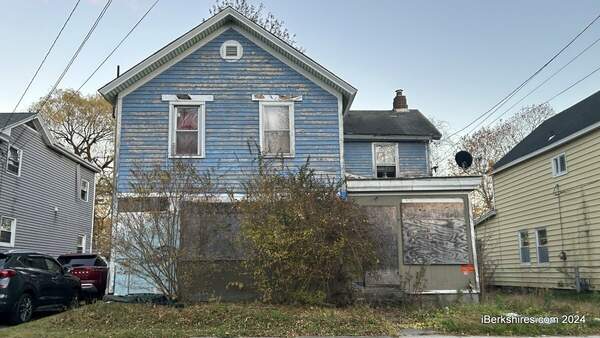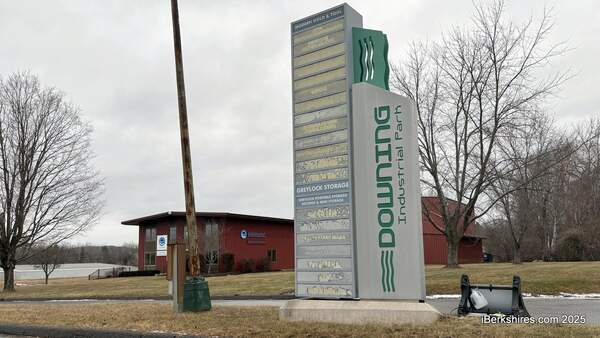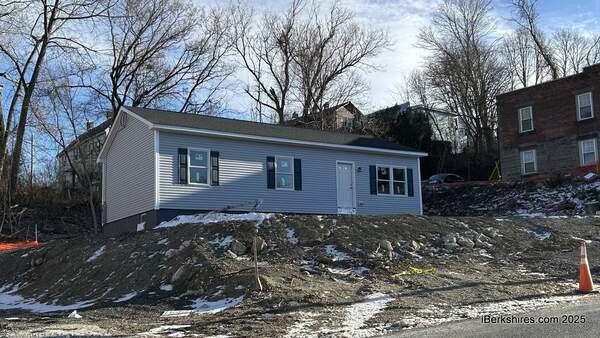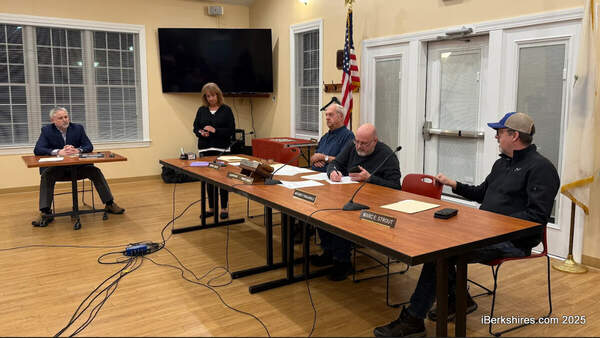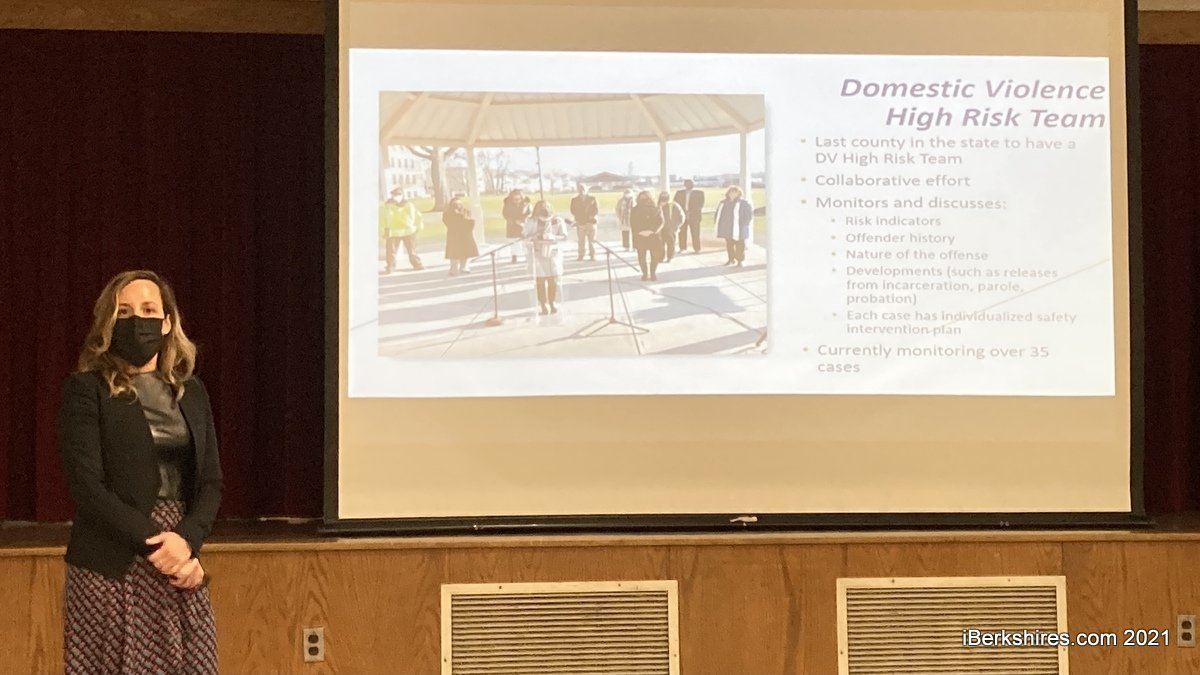
DA Harrington Details Office's Work at Pittsfield Town Hall Event
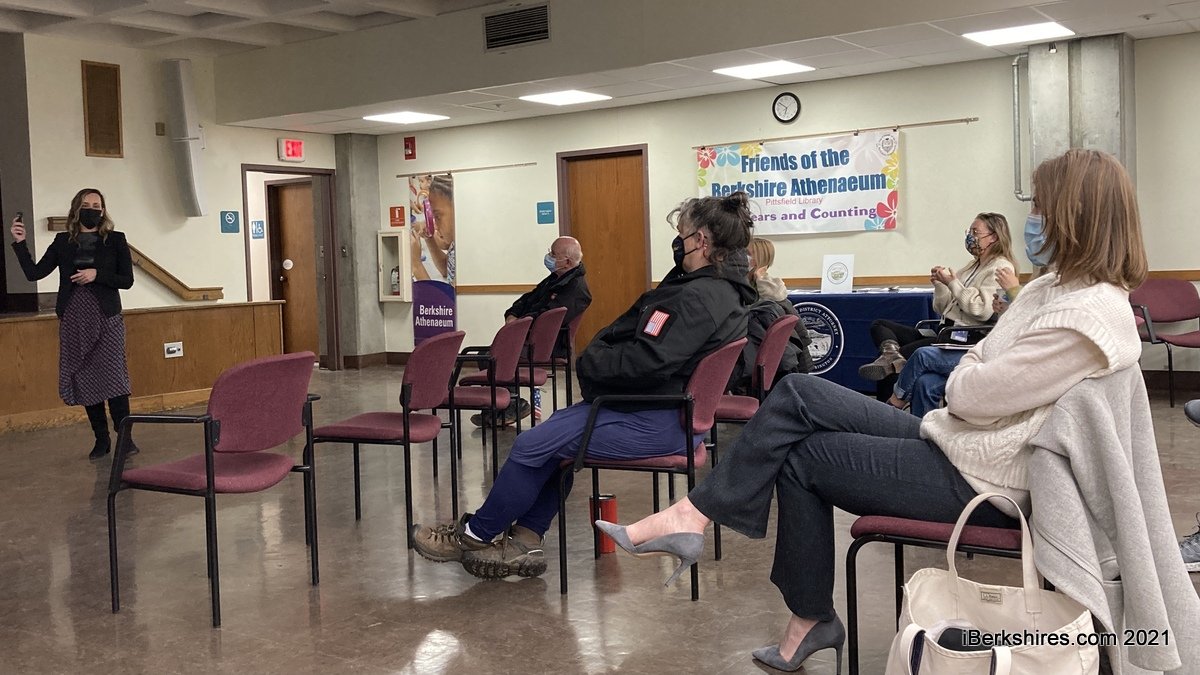
PITTSFIELD, Mass. — District Attorney Andrea Harrington welcomed the community to hear about the progressive work her office has done during a town hall event at the Berkshire Athenaeum on Tuesday.
She spoke largely on violent crime and domestic violence prosecution, victims advocate services, and her approach to harm reduction in response to the opioid epidemic.
The DA visited Adams in late October and Great Barrington last week for town hall events.
Harrington's office prioritizes straying away from the "war on drugs," a phrase for the strict policing and sentencing of drug-related crimes, and instead allocates resources to address the issues that lead to substance use and solutions for users.
"We set out to transform the criminal legal system here in Berkshire County," Harrington said. "What I found as a practicing attorney here in the county is that there was a huge huge emphasis and resources devoted to what I will pejoratively call the war on drugs, and we have worked to really put resources into violent crime."
She outlined some of the recent initiatives that have supported the Berkshire District Attorney Office's mission.
In September, she expanded the Berkshire Law Enforcement Task Force to include a violent crime section. This section will zero in on sexual assaults, high-risk domestic violence, and human trafficking cases by uniting county police departments to collaborate on investigating these crimes.
There are about eight officers from across the county working on the new section of the task force and she is "very happy" with the participation she has seen.
"I've had really wonderful support from local law enforcement around our efforts to improve our investigations of violent crime," Harrington reported. "And every police chief in Berkshire County has signed [Memorandums of Understanding] with my office."
In December of last year, the DA introduced a Domestic Violence High-Risk Team that brings multiple disciplines together to strengthen social service and law enforcement responses to domestic violence.
The goal of this team is to intervene with high-risk domestic violence cases before they become deadly. It is currently monitoring over 35 cases in the county.
There is now a Special Victim's unit in the Berkshire DA's office that has a chief and supporting prosecutor who have contact with local law enforcement officers as soon as they make contact with a victim in a sexual assault case.
"Another change that we implemented was very clear, evidence-based prosecution policy for domestic violence, so this evidence-based prosecution treats (domestic violence) cases the same way that we treat a homicide," Harrington explained.
"So with a homicide, we prosecute those cases, even though the victim is obviously not participating in the prosecution, so we treat our DV cases the same way, if we can get the evidence that we need in order to go forward on the prosecution without having testimony from the victim, that's what we do."
She spoke to the need for a new non-lethal strangulation assessment for the local law enforcement. Reportedly, this act of violence makes a victim 750 times more likely to be murdered by their abuser.
"Strangulation is a very, very dangerous event, if somebody is strangled by their partner, they are 750 times more likely to be murdered by that partner," she explained.
"I'm going to be honest, not all of the judges here in Berkshire County recognize strangulation as the kind of meaningful and dangerous crime that it is."
When Harrington took over the office, there was not a chief of the Child Abuse Unit and there was only one prosecutor. With three prosecutors in the unit now, they have been able to achieve a lot, she said.
There is also a Spanish-speaking forensic interviewer who is trained to speak with children who are victims of crime.
Harrington also detailed her venture to Portugal to learn about its strong health care system that responded to an opioid problem with harm reduction, or reducing negative consequences associated with drug use.
By treating substance abuse as a public health issue, the country was able to lessen its impact along with drug-related crimes. Methadone clinics and mobile medical care units were amongst the strategies used.
"I asked them what they did about all the crime that comes from people who are struggling with addiction and might be seeking drugs and their response was that they don't have those types of crimes, it's been so successful, I really think there's a lot for us to learn about the Portuguese model," She said.
"The community there really reminded me of our community here, there were so many people that were social workers, going out into the streets, meeting people where they were at, helping people be safe helping people get healthy, I can really see that kind of approach being embraced here in Berkshire County."
An attendee asked Harrington how she addresses clergy abuse from Catholic church and she responded that she was "very much an advocate" for that work. All of the district attorney offices in Western Massachusetts have a memorandum of understanding with the Springfield and Fall River dioceses that requires instances of abuse to be referred to law enforcement.
"That shouldn't have to be outlined in an MOU, but it is," she added. "That's all I can say on that topic for the time being, but there needs to be some light on the church cover-up of clergy abuse."
Another attendee was not pleased with the DA. The Hancock woman and her husband have been struggling to get a one-mile road that leads to their house snowplowed by the town.
The couple was referred to Harrington from the Hancock Selectmen and her office ultimately decided that the case was a civil matter.
Because the woman is an immigrant, she felt that the situation was handled with prejudice and was noticeably upset at Tuesday's event.
Harrington apologized that her office was not able to aid the situation.
Tags: district attorney, town hall forum,


